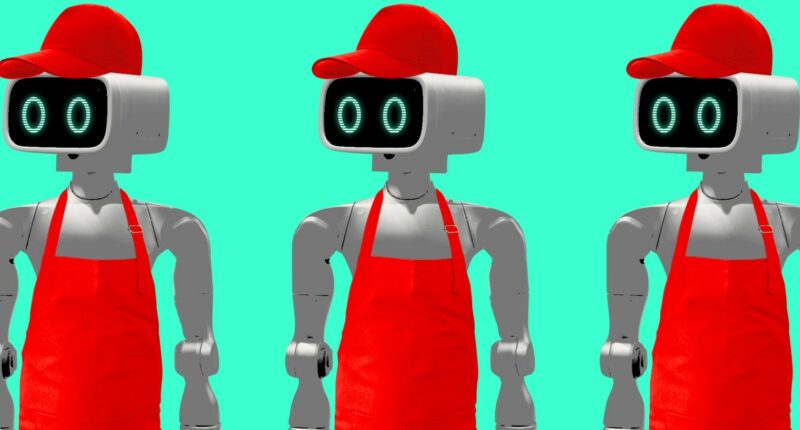Share this @internewscast.com
In Japan, robots are already taking on the task of stocking shelves in convenience stores. Although this technology has not yet reached American shores, it seems likely that major retailers like 7-11 and Walmart will soon begin trialing it. Despite Walmart’s decision to abandon its shelf-scanning robots back in 2020, advancements in machine vision and artificial intelligence over the past five years suggest that the era of machines restocking items, rather than high school students seeking part-time work, is on the horizon.
The reality is that job opportunities for teenagers are dwindling, resulting in many opting out of the workforce altogether. Back in August 2000, 52.3% of Americans aged 16 to 19 were employed or seeking employment. Fast forward to August 2025, and only 34.8% of teenagers are participating in the labor market.
While several factors, predominantly technological advancements, contribute to this trend, the consequences are broadly unfavorable.
One major concern is that automation tends to benefit investors more than the general workforce. Harry J. Holzer, a senior fellow at the Brookings Institution, notes that automation shifts financial gains from workers to business owners, who enjoy increased profits with reduced labor costs. Consumers are left with products that may not necessarily surpass the quality of those prepared by a human employee, without any significant cost savings. Moreover, disruptions like an AWS outage could leave customers empty-handed.
I won’t have to fret about my salmon avocado rolls going bad in a delivery driver’s car due to a firmware glitch or poor cell reception.
Equally important, teenagers are missing out on crucial developmental experiences during their formative years. Mastering job-related responsibilities, understanding workplace dynamics, and acquiring essential financial literacy skills become increasingly challenging with age. Entering the workforce without prior exposure to such environments means missing out on low-stakes opportunities to handle challenging situations, like dealing with a difficult manager at a part-time job.
MIT economist Daron Acemoglu argues that automation doesn’t actually improve productivity that much, is mostly just drives income inequality by displacing lower-skill workers. Automation has eaten into jobs in manufacturing and warehouses, pushing adults who would normally work those positions into areas traditionally reserved for younger workers, like retail, food delivery, and even paper routes. The average age of a retail worker in the US in 2024 was 38.7. In clothing retail specifically, which skews much younger than retail as a whole, it was 33, up dramatically from 29.3 in 2015.
And now that adults are delivering pizza on the side to supplement their stagnant wages and to try to keep up with soaring prices, the robots are coming for those jobs, too. It wasn’t enough that 17-year-olds with driver’s licenses got pushed out of the delivery market by Uber Eats and DoorDash where, depending on what state you live in, you might need to be 21 to drop off Chinese takeout to hungry families. Now, both those companies are dabbling with autonomous food delivery robots in the US.
At the risk of sounding like a Luddite, I’m not interested in having a self-driving cooler roll up to my gate to bring me sushi — I see no benefit to me as a consumer. There’s nothing broken with the current system that a robot is going to fix. Plus, I’ll never have to worry about my salmon avocado rolls spoiling inside a delivery driver’s 2012 Prius because of a firmware update and spotty cell reception.
Stocking shelves, scooping ice cream, flipping burgers, and delivering takeout aren’t glorious jobs. But they used to be the sort of thing that gave young adults and teenagers a first taste of independence. They offered valuable lessons in managing a budget and taught them important interpersonal skills. But the knock-on effects of online shopping, automation, and digital media have largely driven them out of the workforce.
Teens have voluntarily removed themselves from the labor market because they’re forced to fight over an ever-shrinking pool of jobs with an ever-expanding pool of workers. And now, we’re training robots to take what few scraps are left. Even bagging groceries isn’t safe.








